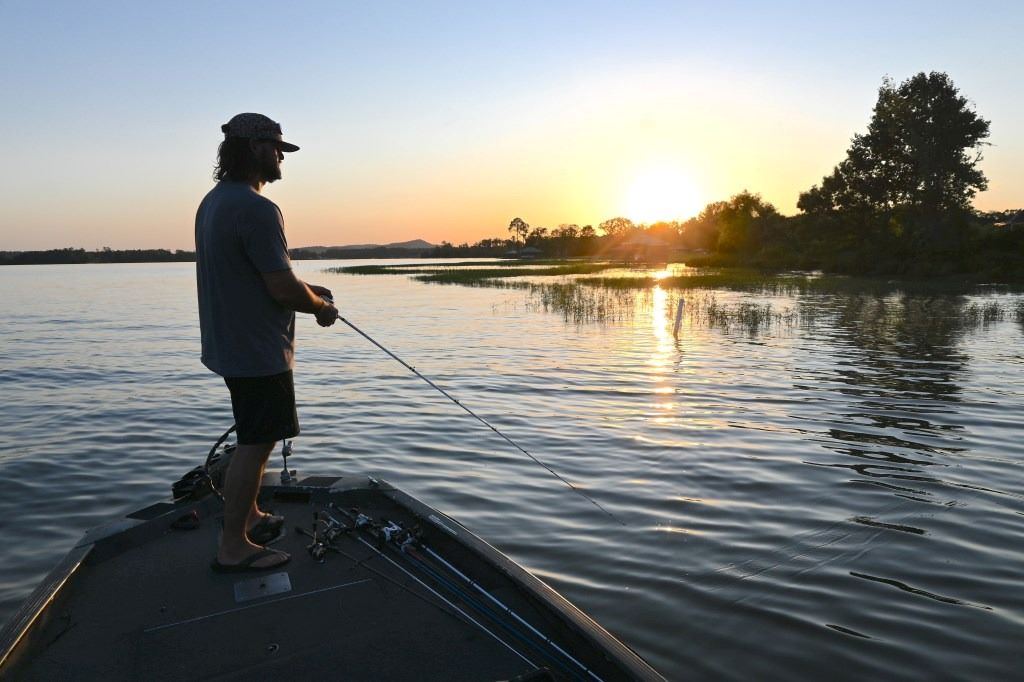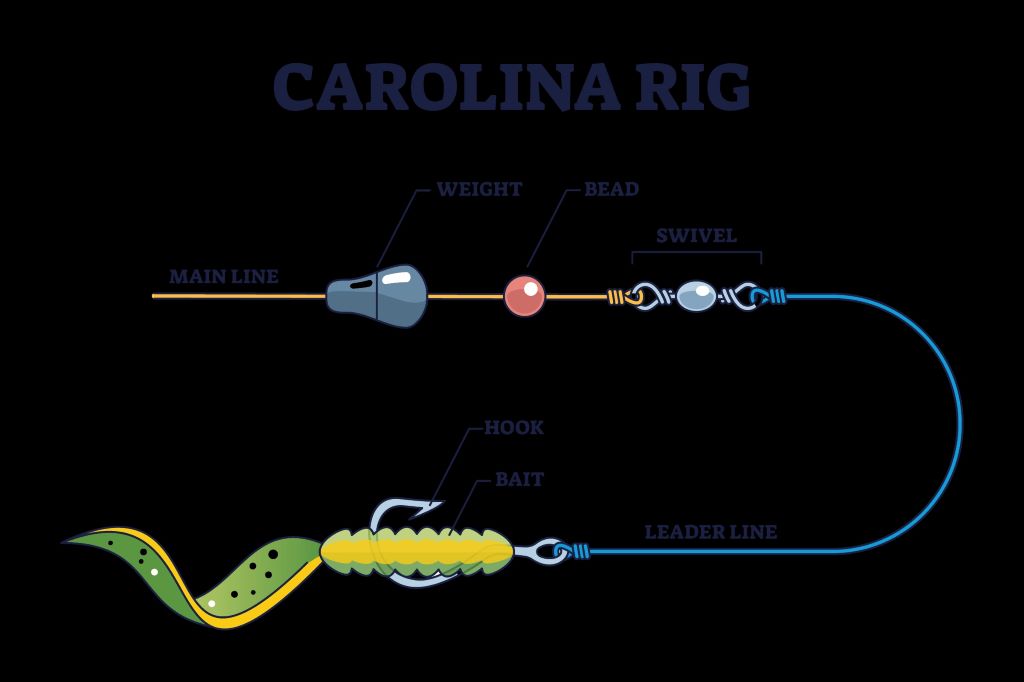Best Rig for Dragging Open Water Flats

Fishing open water flats requires specific techniques and equipment to maximize your success. These shallow areas, typically ranging from two to six feet deep, present unique challenges that demand the right approach. Whether you are targeting bass, redfish, or other species, understanding which rig works best can dramatically improve your catch rate. Many anglers turn to trusted resources like Fishing Gear Shops to find quality equipment and expert advice for these fishing conditions.
Open water flats are expansive, relatively shallow areas that often feature sandy or grassy bottoms. These zones serve as prime feeding grounds for various game fish. However, the shallow depth and open terrain mean fish can easily spot anglers and become spooked. Therefore, selecting the right rig becomes crucial for presenting your bait naturally while maintaining proper bottom contact. The goal is to drag your lure slowly across the flat, mimicking natural prey movement without snagging or appearing unnatural.
When fishing these environments, two rigs consistently outperform others: the Texas rig and the Carolina rig. Understanding the texas rig vs carolina rig debate helps anglers choose the best option for specific conditions. Both rigs have distinct advantages, and knowing when to use each one can transform an average fishing day into an exceptional one. Additionally, both setups allow for weedless presentations, which proves essential when dragging across vegetation-covered flats.
Understanding Texas Rigs for Flat Water
The Texas rig stands as one of the most versatile and popular rigs in fishing. This setup features a bullet-shaped weight pegged directly against a soft plastic bait. The hook penetrates through the nose of the bait and exits slightly, then gets buried back into the plastic body, creating a weedless presentation.
For open water flats, the Texas rig offers several advantages. First, it provides excellent sensitivity. Since the weight sits directly against the bait, anglers can feel every bump, nibble, and structure change on the bottom. This immediate feedback helps detect subtle bites that commonly occur in clear, shallow water. Second, the compact design allows the rig to slip through grass and vegetation with minimal snagging.
When dragging a Texas rig across flats, use weights between 1/8 and 3/8 ounce, depending on wind and current conditions. Lighter weights work better in calm conditions, allowing the bait to fall slowly and naturally. Conversely, heavier weights help maintain bottom contact in windy situations. The key is matching your weight to the conditions while maintaining that crucial bottom contact throughout your retrieve.
Carolina Rig Advantages in Open Water
The Carolina rig takes a different approach to flat water fishing. This setup features a sliding egg or barrel weight separated from the hook by a glass or plastic bead and a swivel. A leader, typically 18 to 36 inches long, connects the swivel to the hook and bait.
This separation between weight and bait creates unique advantages. The weight drags along the bottom while the bait floats behind, suspended and moving naturally with water currents. This presentation appears incredibly lifelike to fish, often triggering strikes when other presentations fail. Furthermore, the longer leader allows the bait to move independently, creating erratic action that mimics struggling prey.
According to Bass Angler Magazine, the Carolina rig excels when fish are slightly suspended or feeding just above the bottom. In open water flats, this scenario occurs frequently, particularly during warmer months when baitfish and shrimp hover over grass beds. The Carolina rig’s design perfectly matches these feeding patterns.
Choosing the Right Rig for Your Situation
Several factors determine which rig performs better in specific situations. Water clarity plays a significant role in this decision. In extremely clear water, the Carolina rig’s natural presentation often produces more bites because fish can scrutinize offerings more carefully. The suspended bait looks more authentic compared to the tighter Texas rig setup.
However, when vegetation density increases, the Texas rig becomes the superior choice. Its compact, streamlined design navigates through grass with fewer hangups. The pegged weight and weedless hook design mean you spend more time fishing and less time clearing vegetation from your line.
Wind conditions also influence rig selection. Strong winds make detecting bites more challenging with a Carolina rig because of the slack line created by the longer leader. Meanwhile, the Texas rig maintains better contact and sensitivity in windy conditions. Therefore, save the Carolina rig for calmer days when you can maintain proper line control.
Best Techniques for Dragging Flats
Regardless of which rig you choose, proper technique makes all the difference. Start by making long casts to cover maximum water. Open flats require searching for fish, and longer casts mean more area covered per retrieve. After casting, allow your rig to settle completely to the bottom before beginning your retrieve.
The dragging motion should be slow and deliberate. Move your rod tip from the 9 o’clock to 11 o’clock position, then reel in slack while returning the rod to the starting position. This technique creates a steady dragging motion while maintaining bottom contact. Additionally, pause occasionally during the retrieve, as these breaks often trigger strikes from following fish.
Pay attention to subtle changes in bottom composition. Transitions from sand to grass, or slight depth changes, often hold more fish. When you feel these transitions, slow down even more and work the area thoroughly. Many strikes occur right at these transitional zones where different habitat types meet.
Equipment Considerations for Flat Fishing
Rod selection significantly impacts your success when dragging open water flats. Medium to medium-heavy rods between seven and seven-and-a-half feet provide the ideal balance of casting distance and sensitivity. Longer rods help with casting but may sacrifice some sensitivity needed for detecting subtle bites.
Reel choice matters equally. A quality baitcasting reel with a smooth drag system handles the long runs that fish often make in open water. Gear ratios between 6.4:1 and 7.1:1 work well, providing enough speed for taking up slack without being so fast that you lose feel. Furthermore, use braided line for superior sensitivity, with a fluorocarbon leader to reduce visibility in clear water.
Soft plastic selection varies based on target species and conditions. Creature baits, lizards, and worms all produce results when dragged across flats. Match your bait size to local forage, and do not be afraid to experiment with colors until you find what works on any given day.
Conclusion
Dragging open water flats successfully requires understanding both your environment and your equipment. The Texas rig and Carolina rig each offer distinct advantages for these conditions. Texas rigs provide superior sensitivity and weedless capabilities, making them ideal for vegetated areas and windy conditions. Carolina rigs create more natural presentations that excel in clear water and when fish are suspended above the bottom.
Success ultimately comes from matching your rig to the specific conditions you face. Consider water clarity, vegetation density, wind, and fish behavior when making your selection. Additionally, proper technique, quality equipment, and persistence all contribute to productive days on the water. By mastering both rig styles and understanding when to use each, you will dramatically increase your success rate when fishing open water flats.
Frequently Asked Questions
What is the main difference between Texas and Carolina rigs?
The main difference lies in weight placement. Texas rigs have the weight pegged directly against the bait, while Carolina rigs separate the weight from the bait using a leader. This separation affects how the bait moves through the water and how anglers detect bites.
What weight should I use when dragging open water flats?
For Texas rigs, use 1/8 to 3/8 ounce weights depending on conditions. Carolina rigs typically require 1/2 to 1 ounce weights to maintain bottom contact. Adjust based on wind, current, and desired fall rate.
How long should my Carolina rig leader be for flat fishing?
Leaders between 18 and 36 inches work best for open water flats. Longer leaders create more action but make bite detection harder. Start with 24 inches and adjust based on fish activity and your ability to detect bites.
What type of line works best for dragging flats?
Braided mainline between 15 and 30 pound test provides excellent sensitivity and casting distance. Attach a fluorocarbon leader of 12 to 20 pound test for reduced visibility in clear, shallow water.
Can I use these rigs in saltwater flats?
Absolutely. Both Texas and Carolina rigs work excellently for saltwater species like redfish, speckled trout, and flounder. Simply upgrade to saltwater-rated hooks and slightly heavier weights to account for tidal currents and larger fish.
Related Topics:
How to Fix Stuck Telescopic Lure Retriever? Here’s the Ultimate Fix You Need Right Now
Explore the Best Broken Bow Oklahoma Things to Do This Weekend

